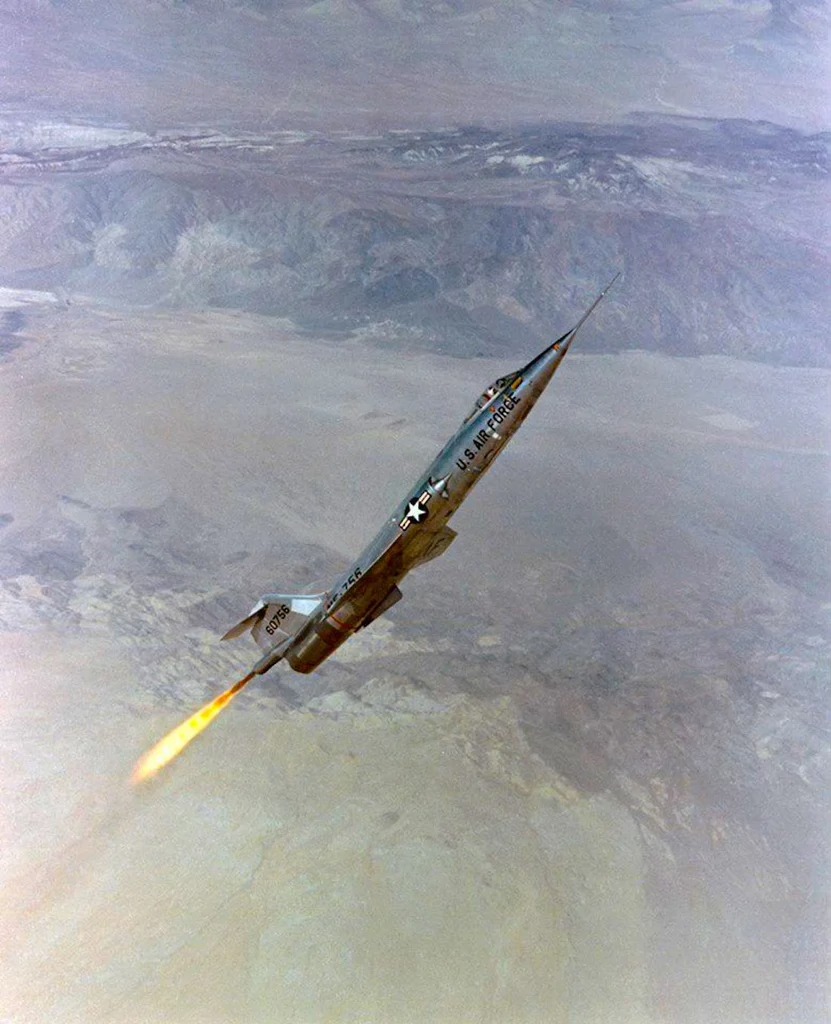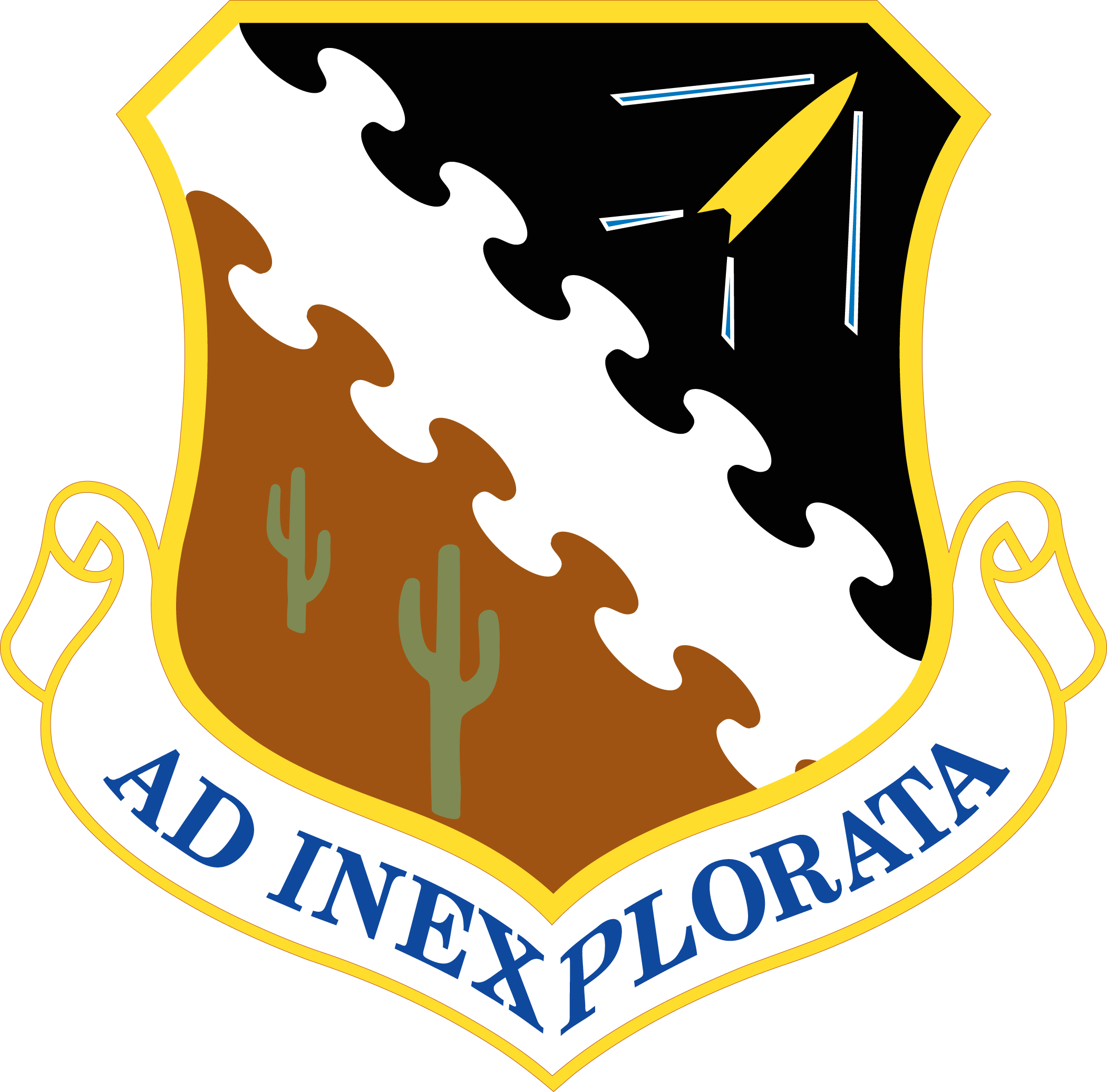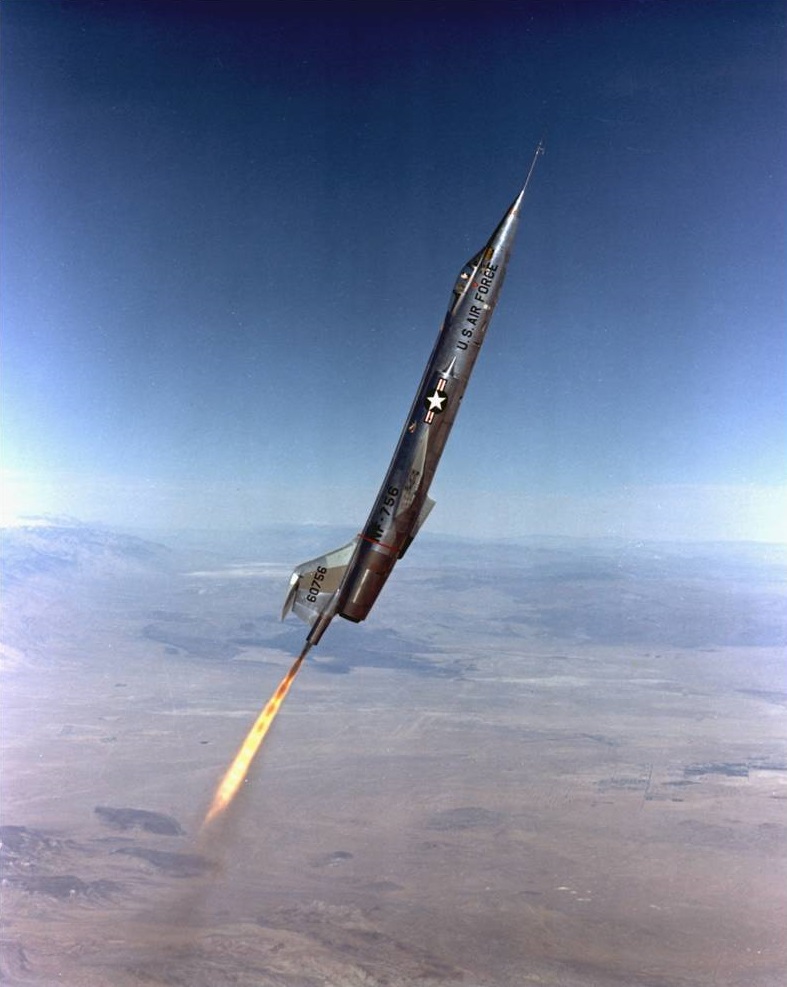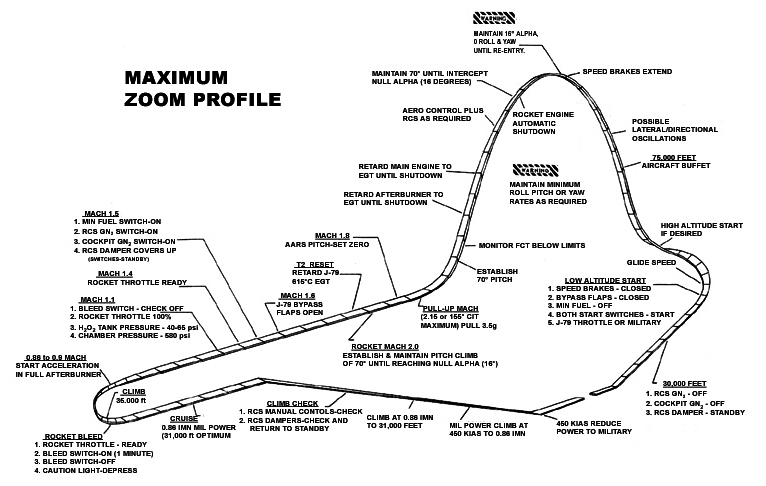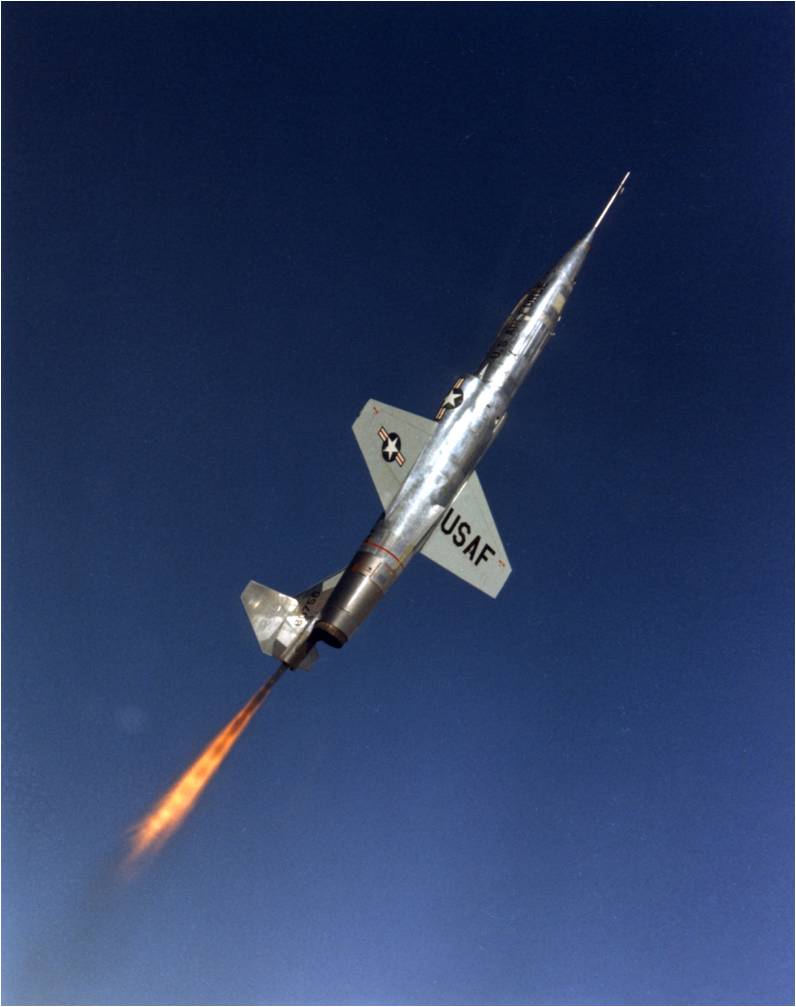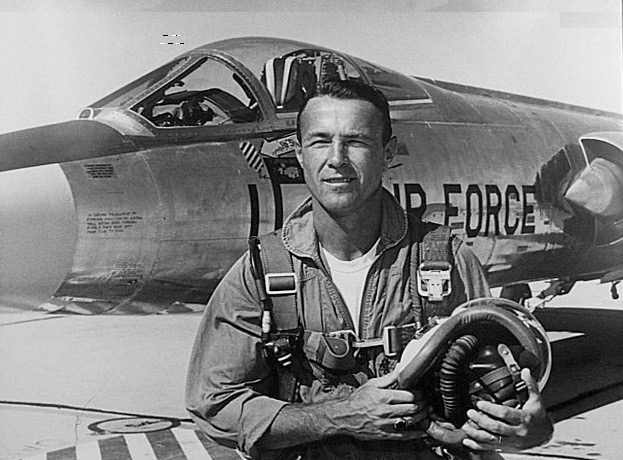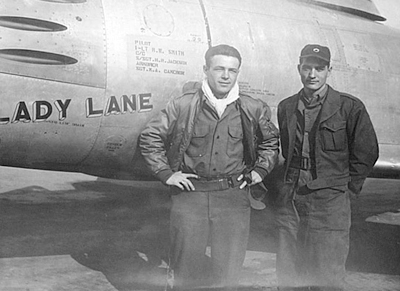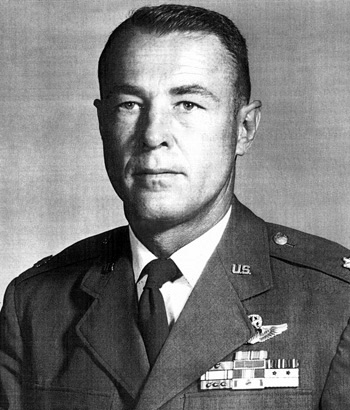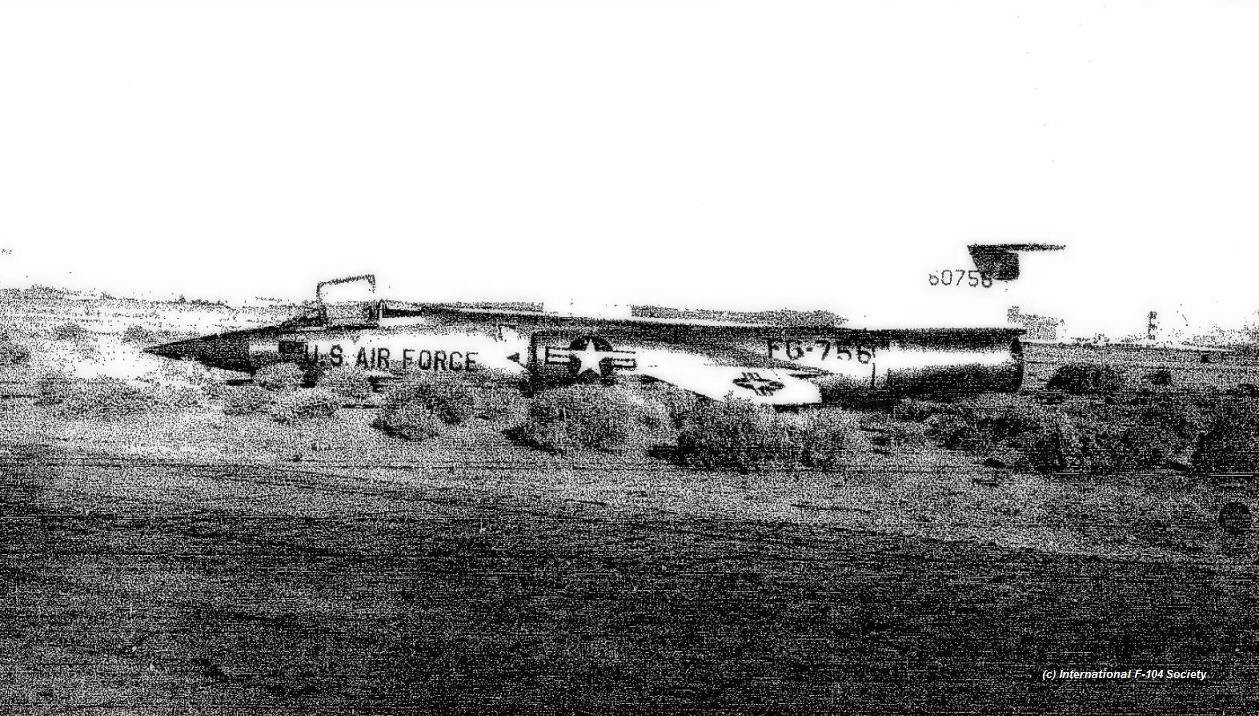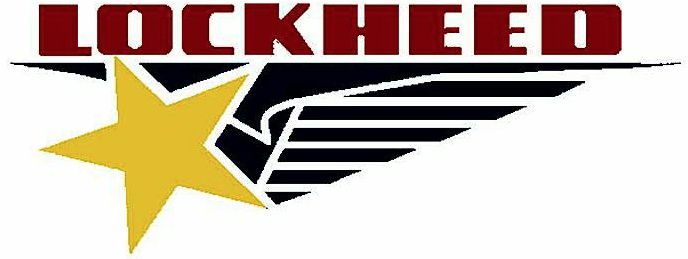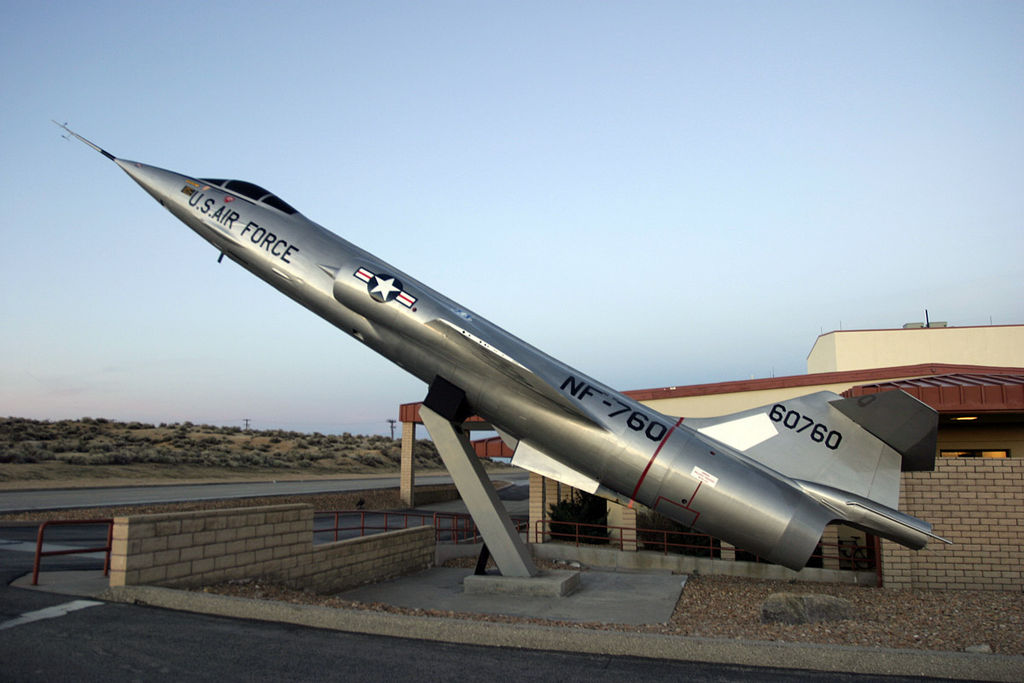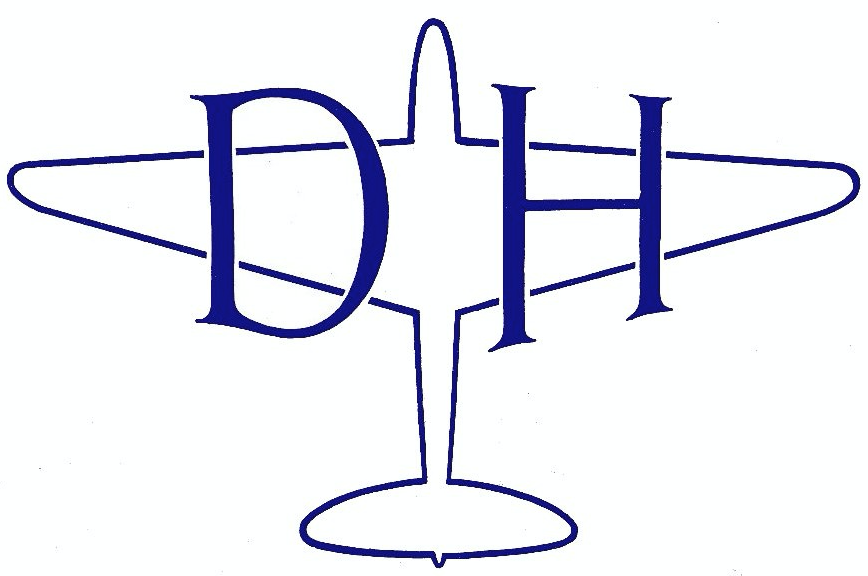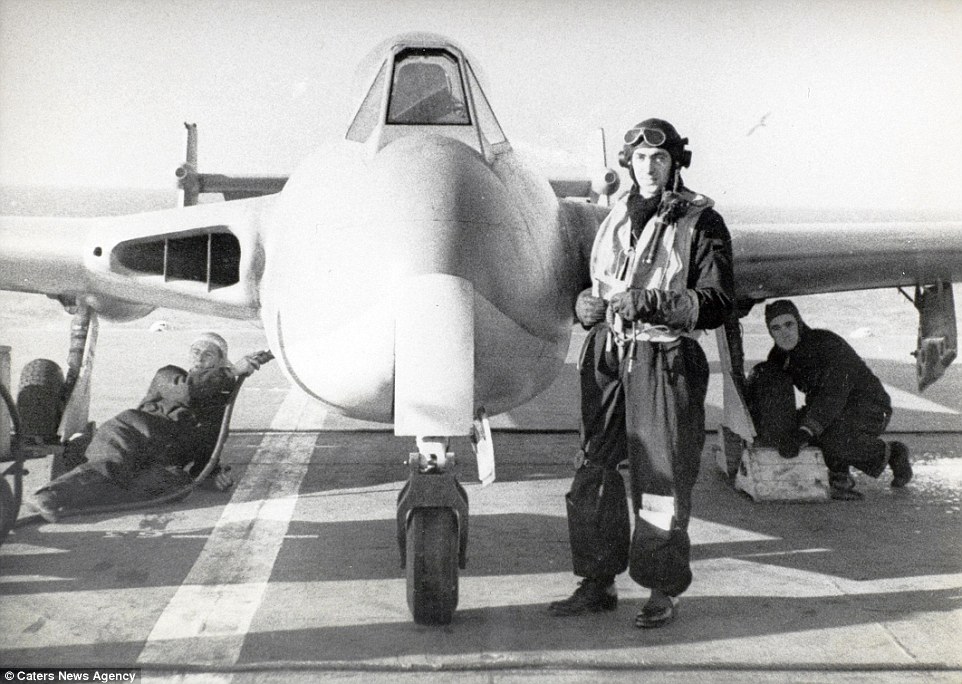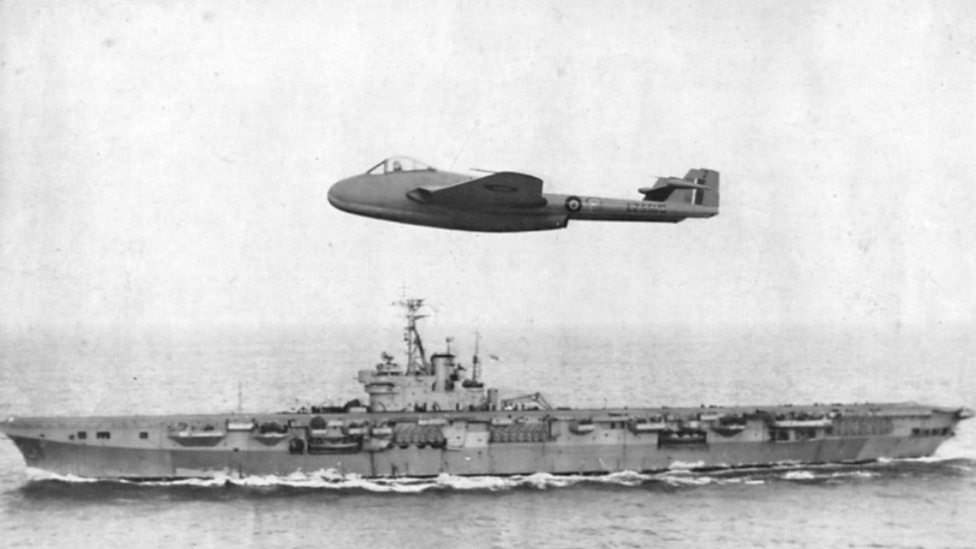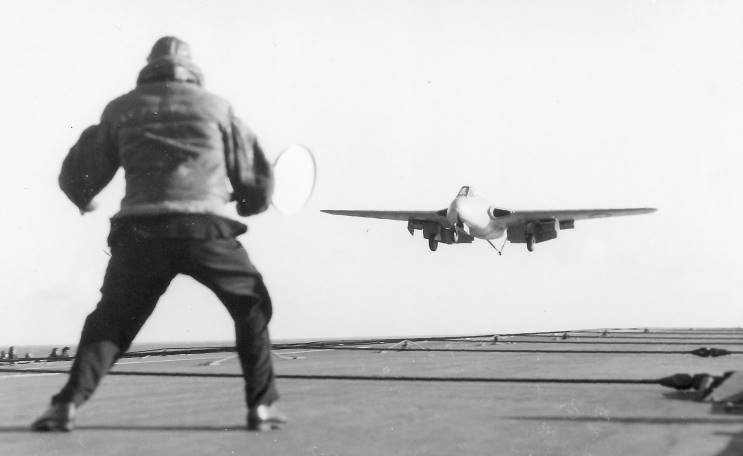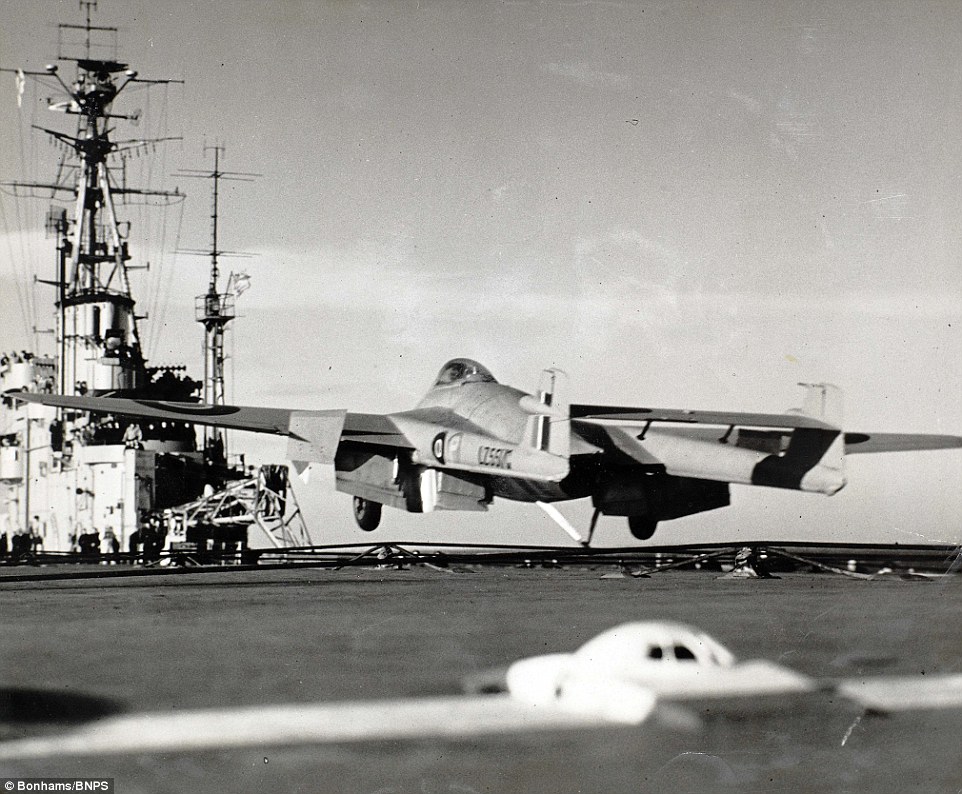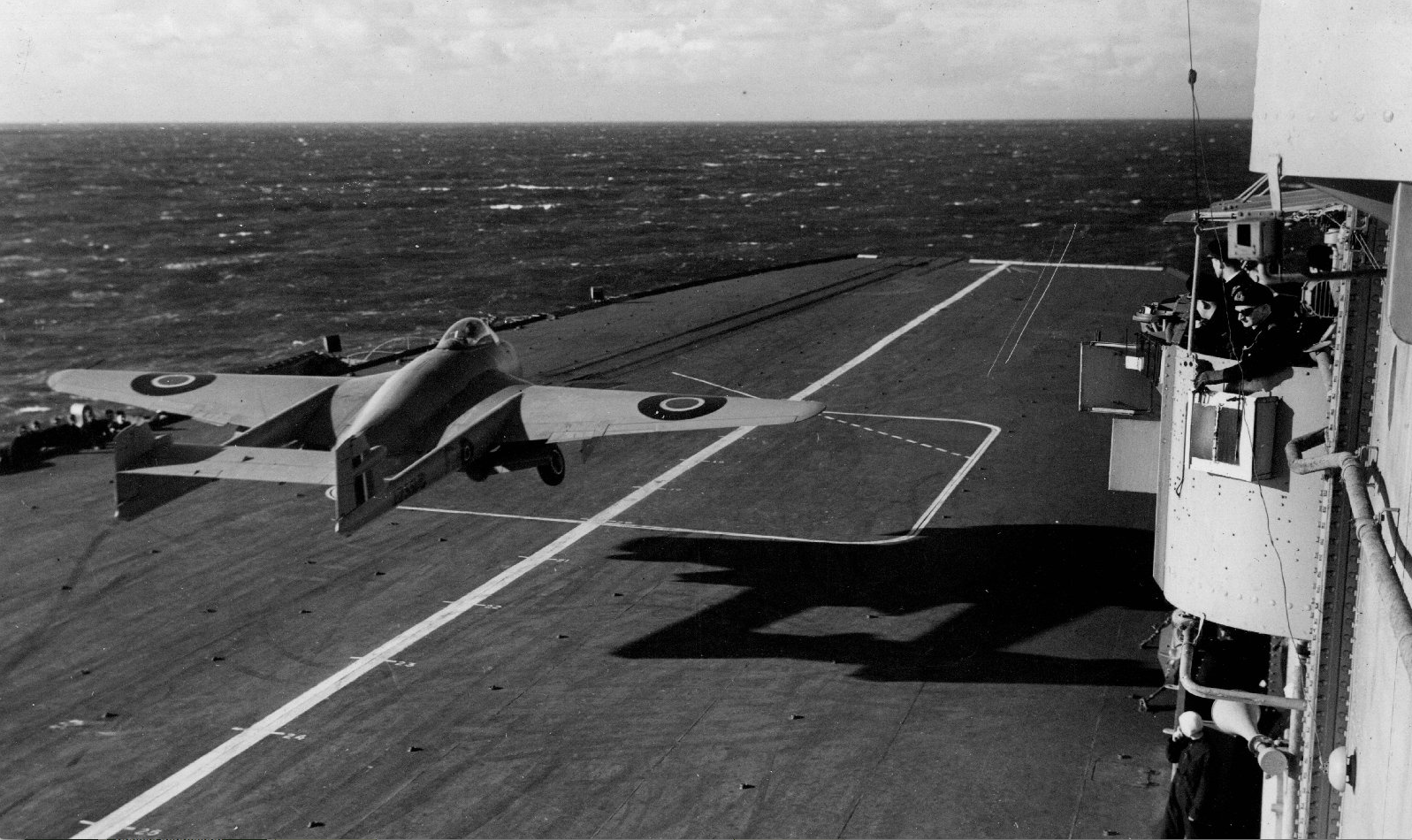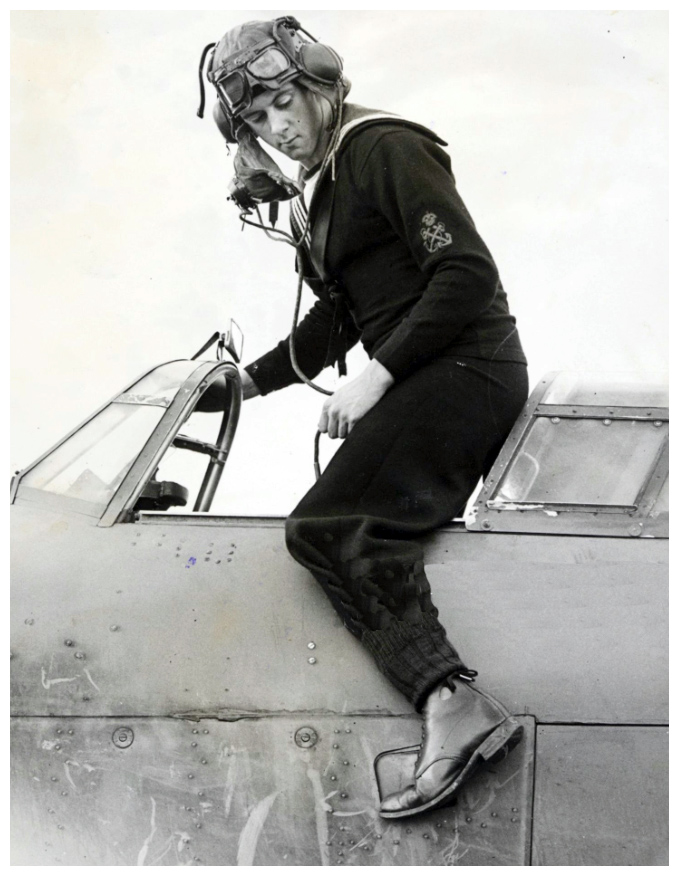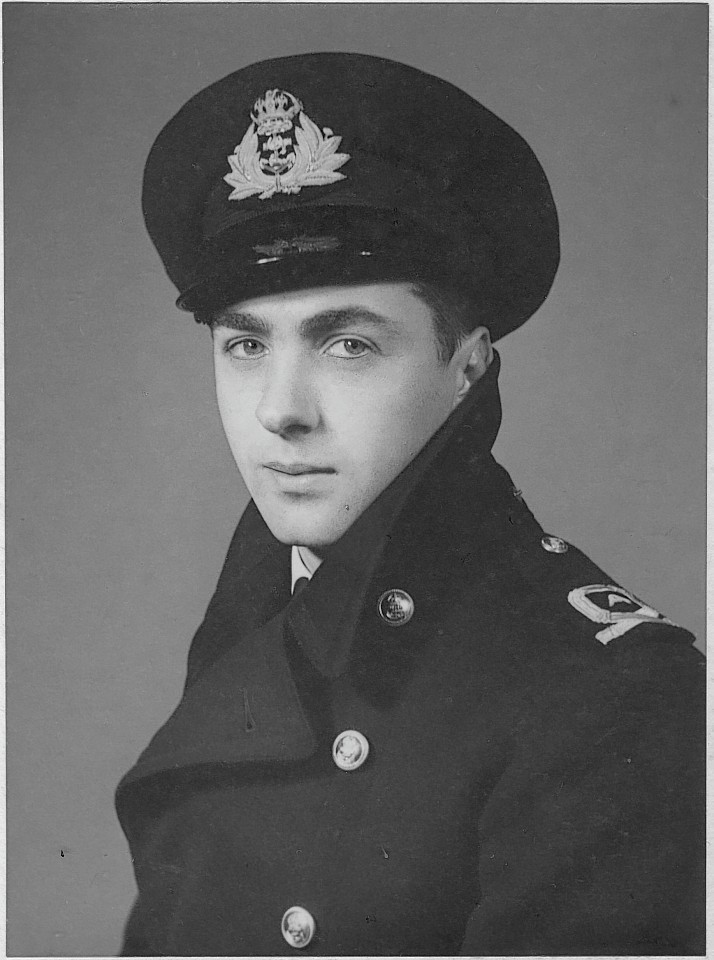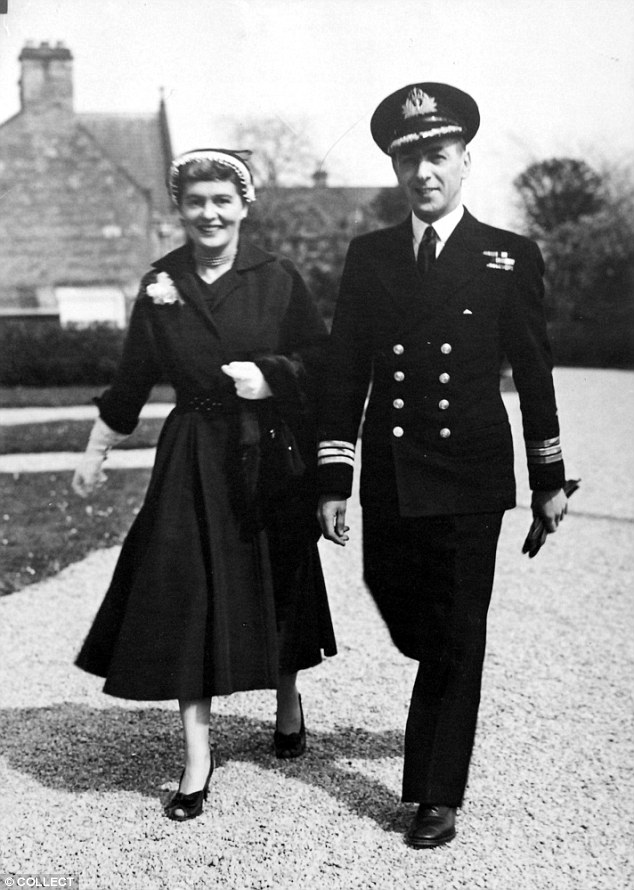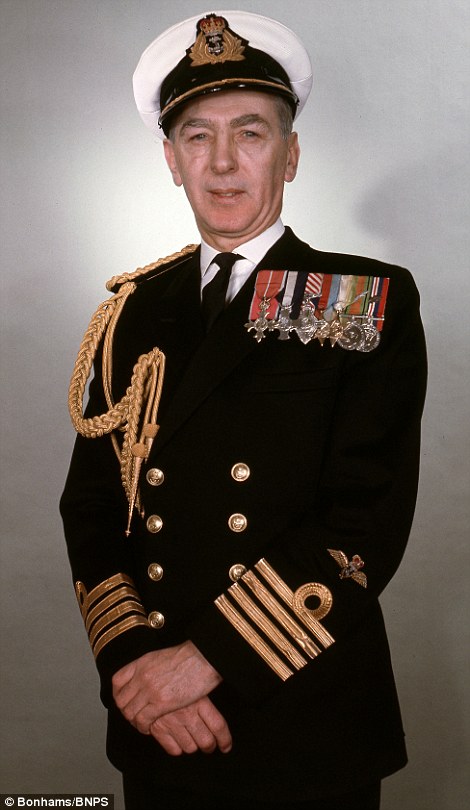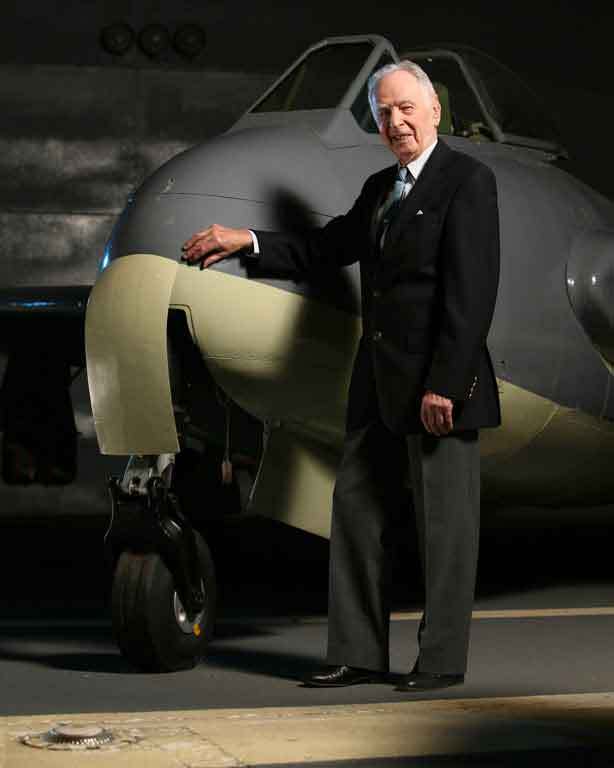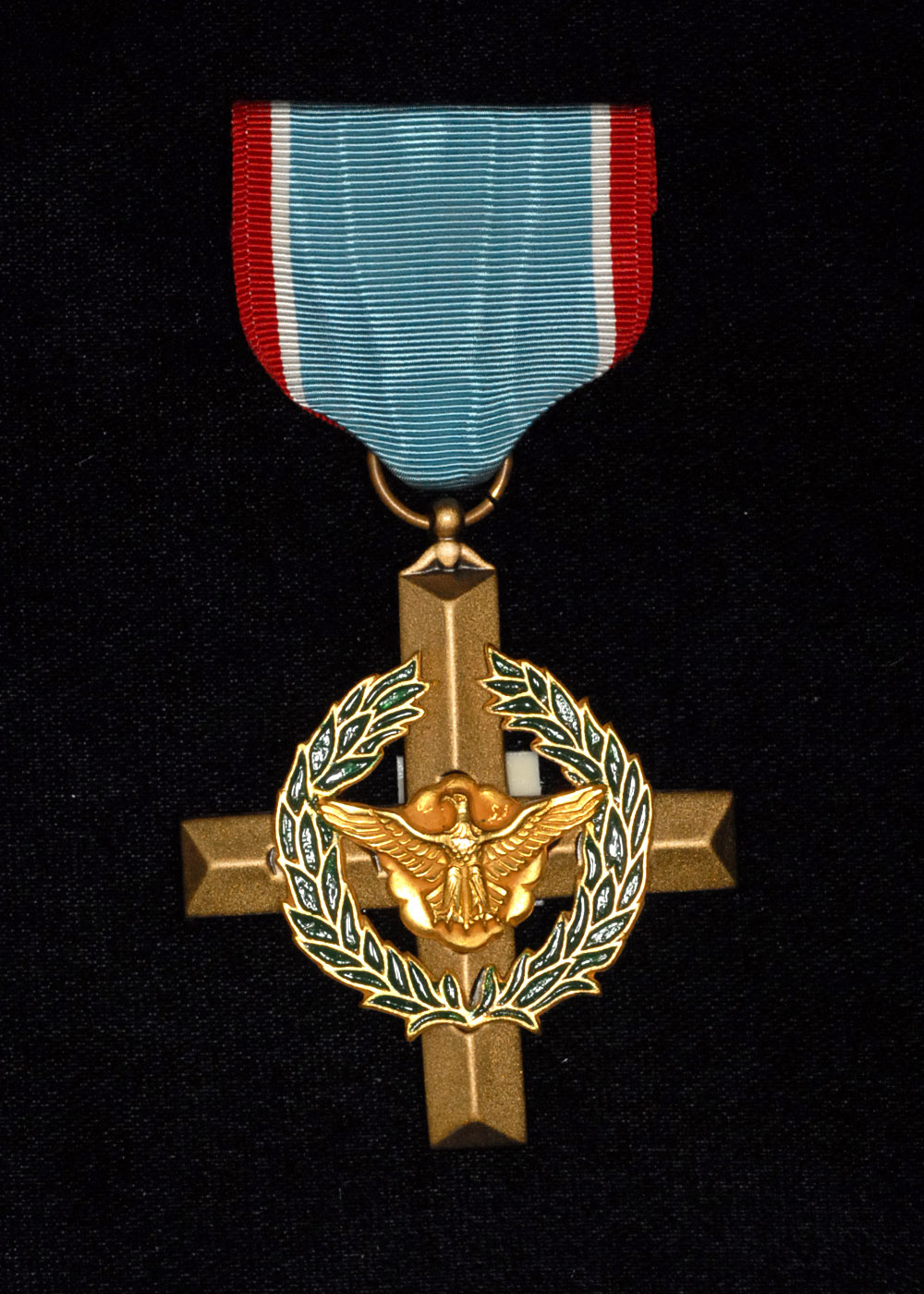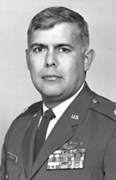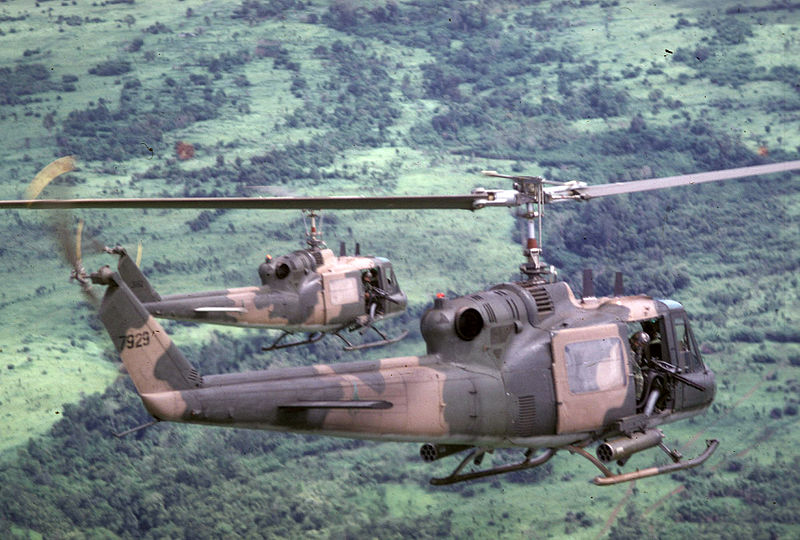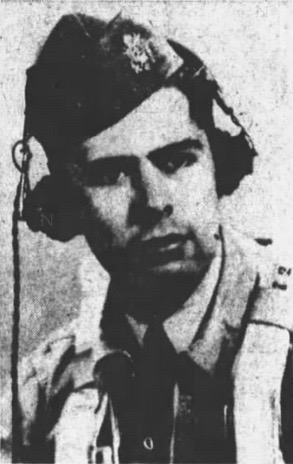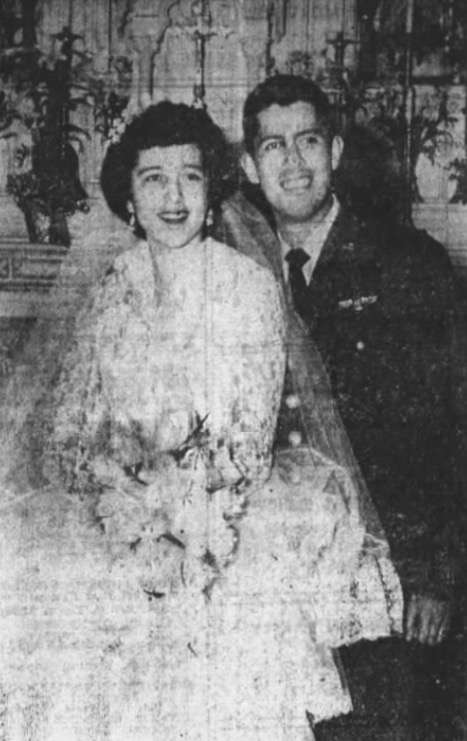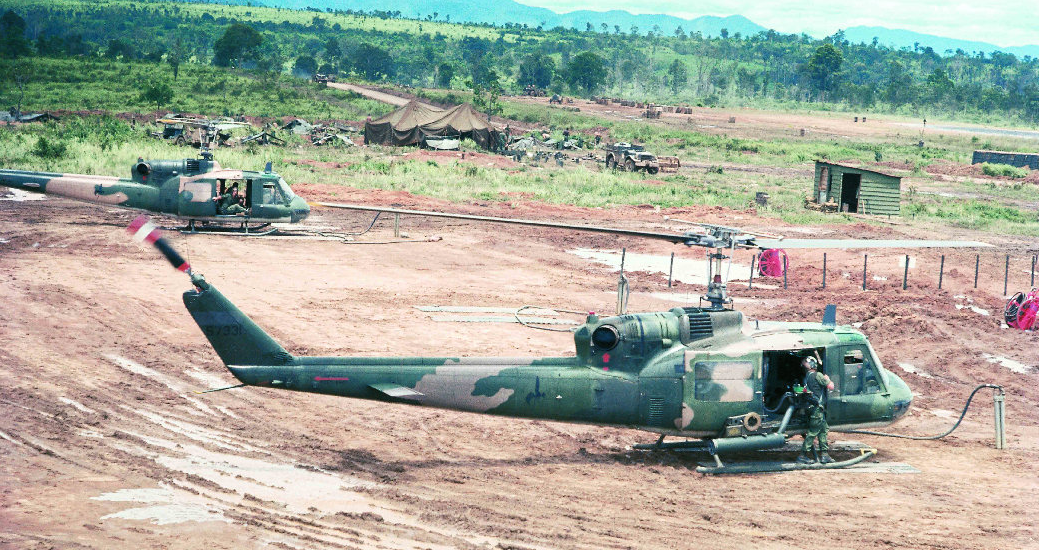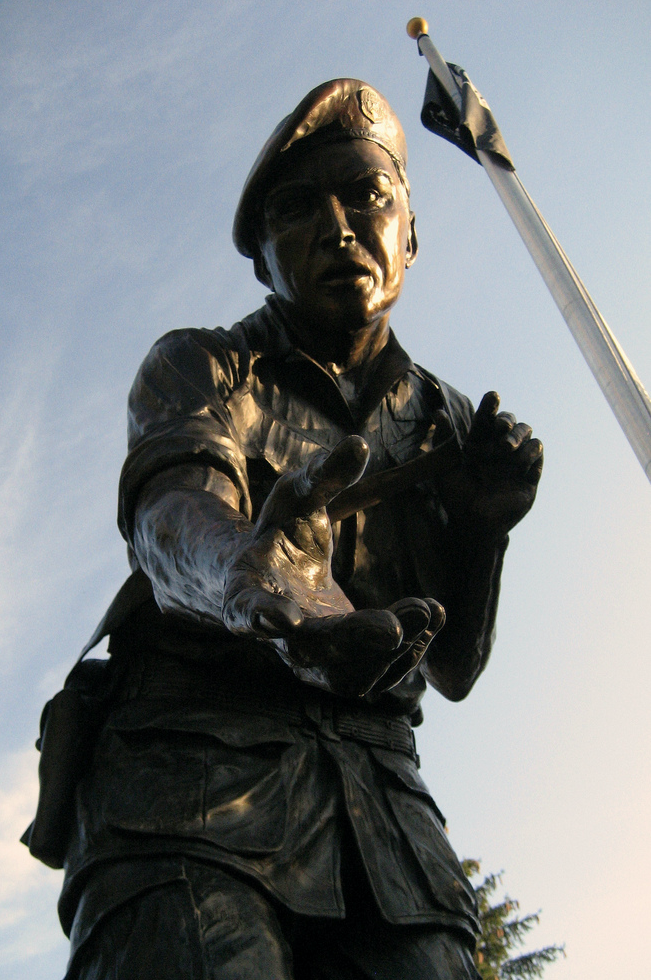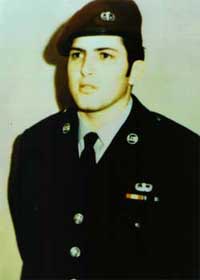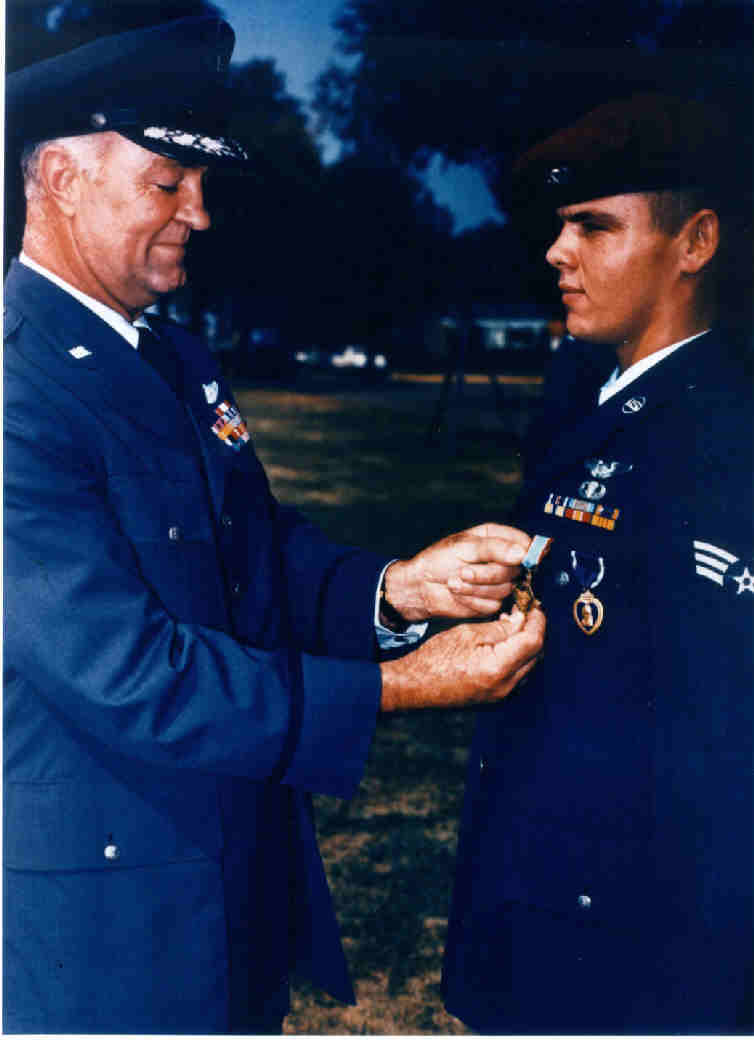
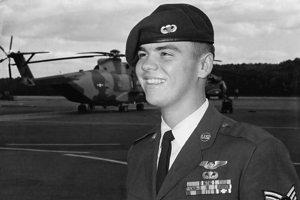
With more than 70 individual medals, Chief Master Sergeant Hackney was the most highly decorated enlisted man in United States Air Force history.
His citation reads:
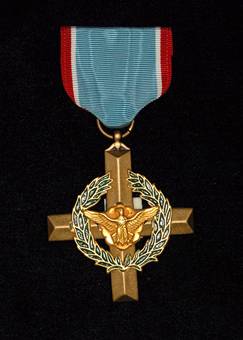
“The President of the United States of America, authorized by Title 10, Section 8742, United States Code, takes pleasure in presenting the Air Force Cross to Airman Second Class Duane D. Hackney (AFSN: 16827003), United States Air Force, for extraordinary heroism in military operations against an opposing armed force while serving with the 37th Aerospace Rescue and Recovery Squadron, 3d Air Rescue and Recovery Group, DaNang Air Base, Vietnam, as a Paramedic (Pararescueman) on an unarmed HH-3E Rescue Helicopter near Mu Gia Pass, North Vietnam, on 6 February 1967. On that date, Airman Hackney flew two sorties in a heavily defended hostile area. On the first sortie, despite the presence of armed forces known to be hostile, entrenched in the vicinity, Airman Hackney volunteered to be lowered into the jungle to search for the survivor. He searched until the controlling Search and Rescue agency ordered an evacuation of the rescue crew. On the second sortie, Airman Hackney located the downed pilot, who was hoisted into the helicopter. As the rescue crew departed the area, intense and accurate 37-mm. flak tore into the helicopter amidships, causing extensive damage and a raging fire aboard the craft. With complete disregard for his own safety, Airman Hackney fitted his parachute to the rescued man. In this moment of impending disaster, Airman Hackney chose to place his responsibility to the survivor above his own life. The courageous Pararescueman located another parachute for himself and had just slipped his arms through the harness when a second 37-mm. round struck the crippled aircraft, sending it out of control. The force of the explosion blew Airman Hackney through the open cargo door and, though stunned, he managed to deploy the unbuckled parachute and make a successful landing. He was later recovered by a companion helicopter. Through his extraordinary heroism, superb airmanship, and aggressiveness in the face of hostile forces, Airman Hackney reflected the highest credit upon himself and the United States Air Force.”
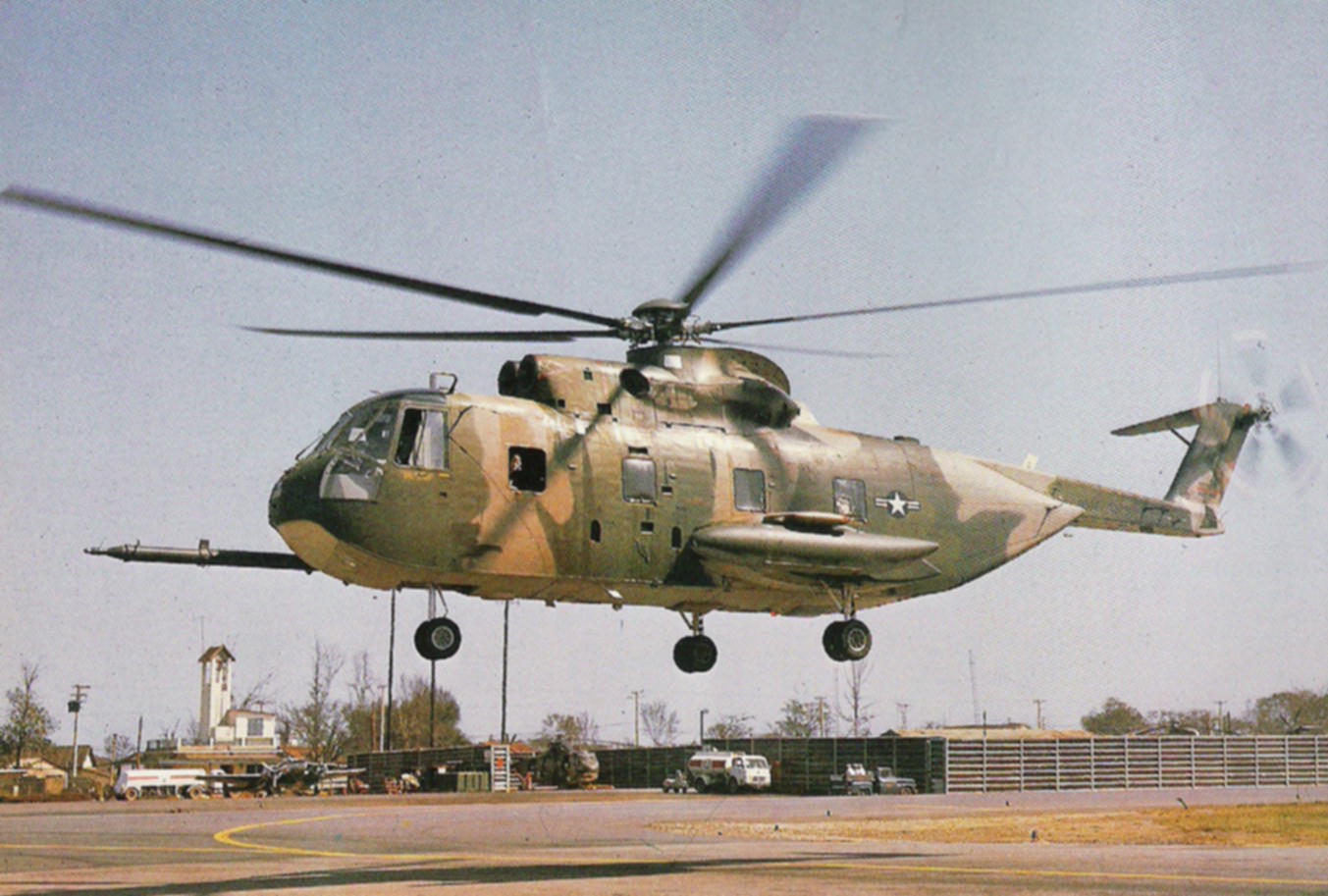
The following is excerpted from Chief Master Sergeant Hackney’s U.S. Air Force biography:
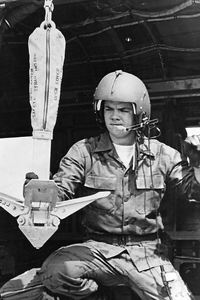
. . . His pararescue career began quickly. Three days after reporting for duty, Hackney, now an airman second class, flew his first combat mission. On his 10th mission, in April 1966, he was hit by enemy fire while pulling a wounded Marine pilot aboard his HH-3E Jolly Green Giant. Five times in the months ahead his helicopter was shot down. He earned four Distinguished Flying Crosses and 18 Air Medals for single acts of heroism. Then came Feb. 6, 1967 and the mission that would lead to the second highest award for heroism given by the U.S. Air Force.
That morning he descended from his HH-3E to look for a downed pilot near Mu Gia pass, North Vietnam. He searched for two hours until bad weather forced a return to base. A few hours later, radio contact with the pilot was re-established and another rescue was attempted. This time, the severely wounded pilot was found. The wounded pilot hugged Hackney and said, “You’re beautiful.”
“Hey man,” said Hackney, “I’m not the stewardess.”
Hackney carried the pilot back to the helicopter to begin their retreat. They had to hurry because it was rapidly becoming dark. Before they could clear enemy air space, anti-aircraft artillery struck the helicopter, filling the compartment with smoke and fire. Hackney strapped his own parachute on the pilot’s back and helped him get out the door. He found a spare, oil-stained parachute just as a second 37-mm antiaircraft shell ripped into the helicopter. Before he could buckle the chute, the Jolly Green Giant’s fuel line exploded, blasting Hackney through the door. Holding on to the chute with his arms, he managed to pull the cord before plummeting into the forest 250 feet below. The chute slowed his fall, but he still plunged 80 more feet to a rock ledge.
Severely burned and pierced by shrapnel, Hackney managed to evade capture. When an A-1 Skyraider passed overhead, he fired a flare. A chopper mission was sent in and the rescuer was rescued. When he got back to Da Nang Air Base, he was told that he was the only survivor of the thwarted mission. Four other crew members and the pilot they had gone to save had died.
For giving up his parachute and risking his own life, Hackney received the Air Force Cross. Hackney was presented the medal by Gen. Howell M. Estes Jr., the commander of Military Airlift Command.
Hackney continued his distinguished Air Force career, retiring in 1991 as a chief master sergeant. In 1993, he died of a heart attack in his Pennsylvania home. He was 46 years old.
In a 1968 interview, Duane Hackney described the events of 6 February 1967 in his own words:
“We scrambled out that morning,” he said. “We knew that a pilot was down in the jungles. There was voice contact but nobody had actually seen him.
“He was at the bottom of a pass, covered by three canopies of overgrowth. Clouds were low, making it difficult to see much of anything.
“I thought I saw something shining down there. I asked if I could go down and look. There was flak around us but it was falling short. I rode the end of a cable to the ground and picked my way through the jungle.
“I stumbled over rocks and some heavy growth and finally spotted footprints made by U.S. combat boots. But I couldn’t locate him. Late in the day we went back and this time I found him.
“We got him into the chopper okay and I was treating his abrasions when flak hit. There was smoke and fire everywhere. I put my parachute on him as fast as I could.
“I grabbed another chute for myself and barely had it on when the second round of flak poured in on us. I felt sharp pains. I went out the rear door and managed to pull the rip cord as I was blown out of the chopper at about 200 feet.
“I landed in a tree and somehow freed myself. My left arm and back were raw and bleeding. Funny, I was disappointed when I couldn’t reach into my pocket and yank out the dollar valentine I had bought. I was worried because I didn’t think I would be able to send it.
“I got the red smoke flare out, opened it and waited for my Air Force buddies to rescue me. In about half an hour they were picking me up. As we climbed into the air, I looked out and saw the flaming wreckage of the helicopter.”
—The Baltimore Sun, Vol. 263, No. 102, 12 September 1968, Page B5, column 2
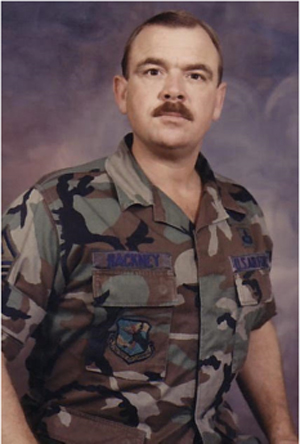
Duane Dale Hackney was born 5 June 1947 at Flint, Michigan. He was the second of three children of Glendon Dale Hackney, an automobile assembly line worker, and Florence Neeley Gorman Hackney.
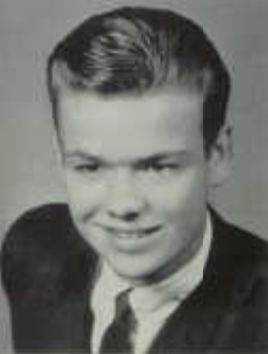
Hackney attended Beecher High School in Flint. He was a member of the Clipper yearbook staff. He served on the student council and played on the school’s baseball, football and swimming teams. He was also a member of the teen, drama and glee clubs. Hackney graduated in 1965.
Duane Hackney enlisted in the United States Air Force 18 June 1965. He was trained as a pararescue jumper. The year long training included parachute and scuba training, combat survival school, the U.S. Army Ranger School at Fort Benning, Georgia, and training as a combat medic.
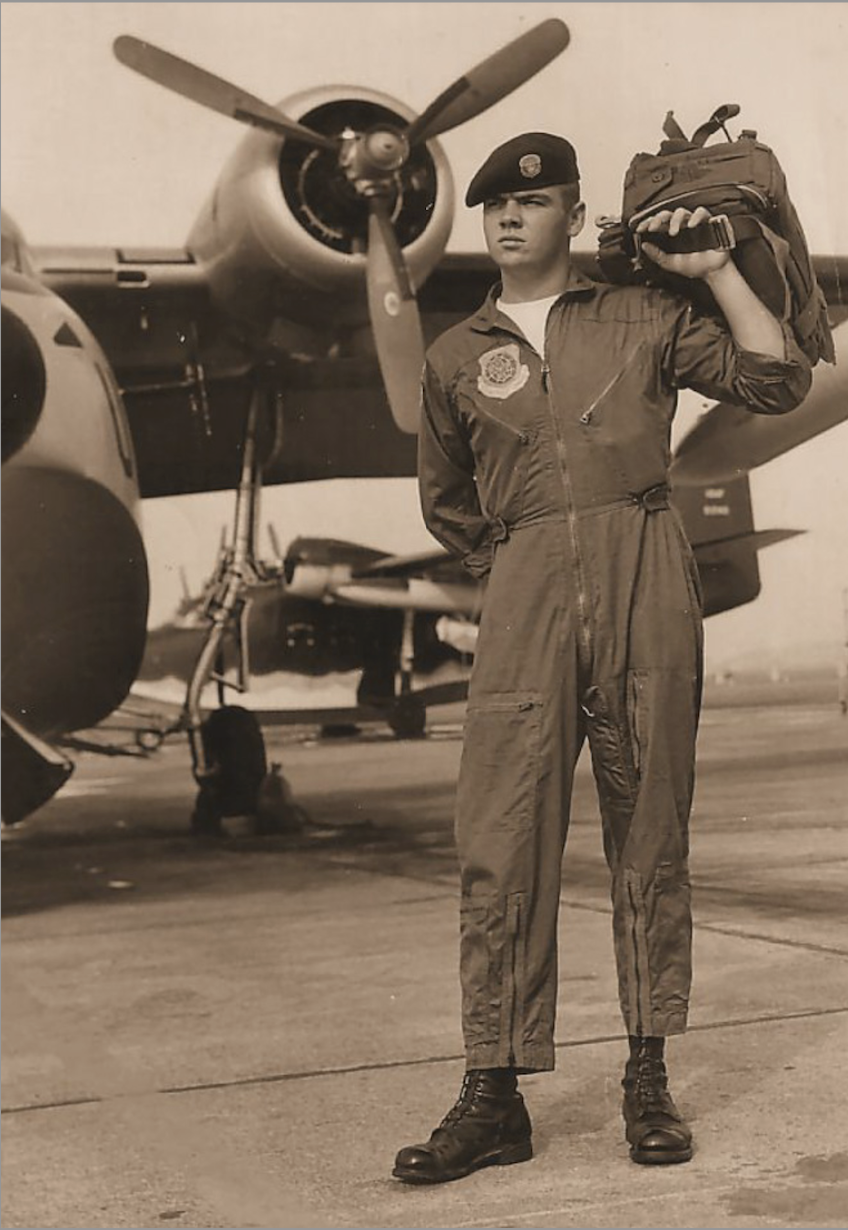
Hackney’s first combat tour began 27 September 1966. He served with the 38th Aerospace Rescue and Recovery Squadron at Da Nang Air Base, Republic of South Vietnam, from September 1966 to January 1967, and then with the 37th ARRS until October 1967. He flew 200 combat missions during the Vietnam War. He was transferred to the 41st ARRS at Hamilton AFB in California.
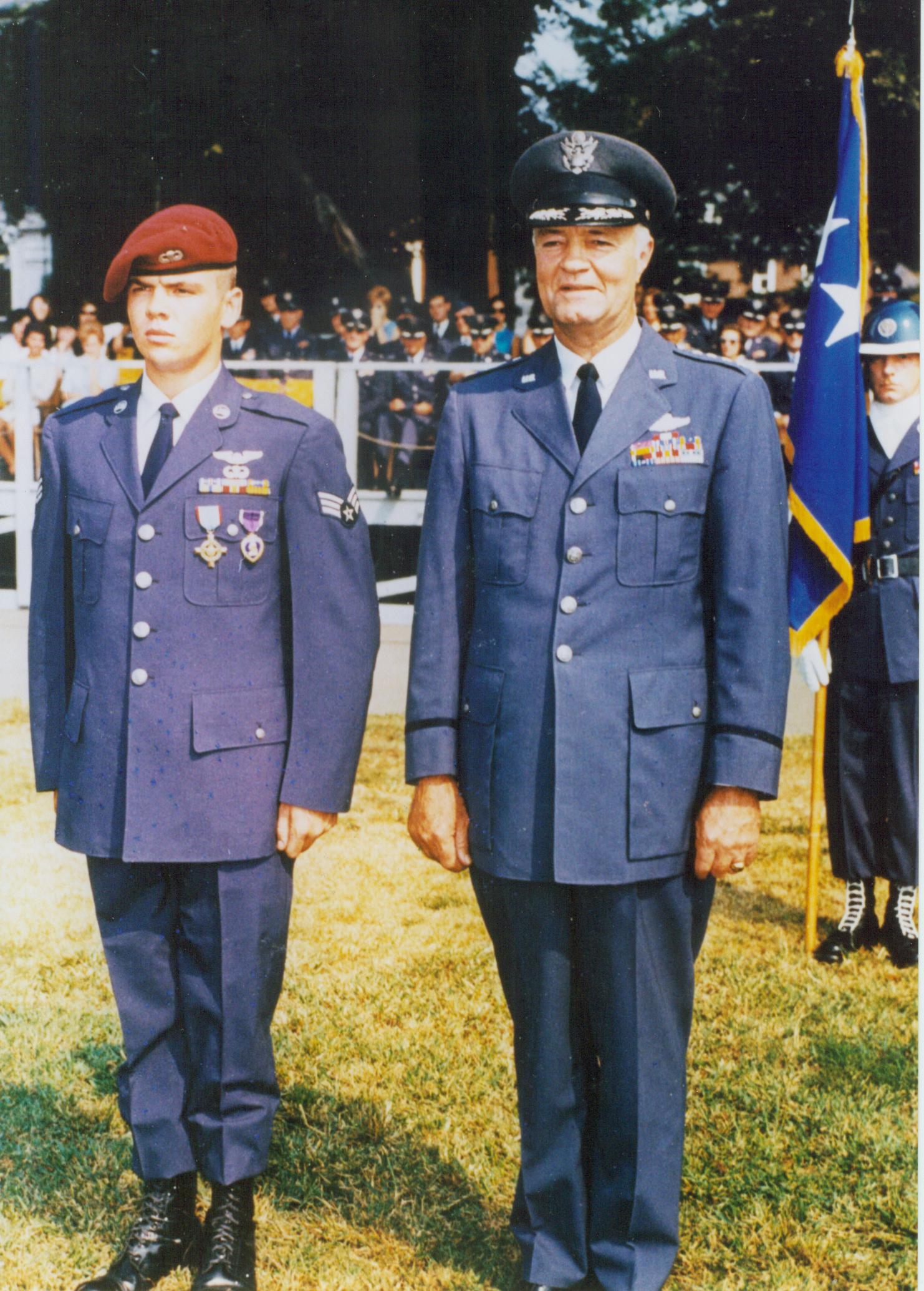
In May 1968, General John Dale Ryan, Vice Chief of Staff of the United States Air Force, presented Hackney the Cheney Award ¹ during a ceremony held at The Pentagon.
Sergeant Hackney returned to Da Nang Air Base in June 1969, where he reenlisted. (In October 1967, the Air Force changed the rank of Airman 1st Class to Sergeant.)
Hackney returned to the 37th ARRS in 1971, based at Osan Air Base, Republic of South Korea.
Sergeant Hackney was discharged from the Air Force 30 March 1973. He then worked as a sheriff’s deputy for the Genessee County Sheriff’s Department.
Hackney reenlisted in the Air Force as a staff sergeant, 25 March 1977. He was given two months of intensive retraining. He said, “I miss the Air Force lifestyle and my job as a paramedic.”
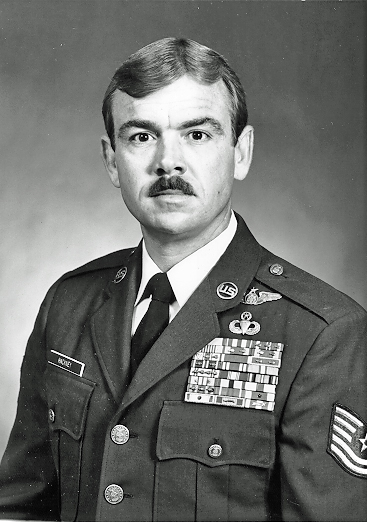
After suffering a heart attack in 1981, Hackney retrained as an Air Force security policeman.
Sergeant Hackey married his wife, Carole, in 1982. They would have a son, Jason.
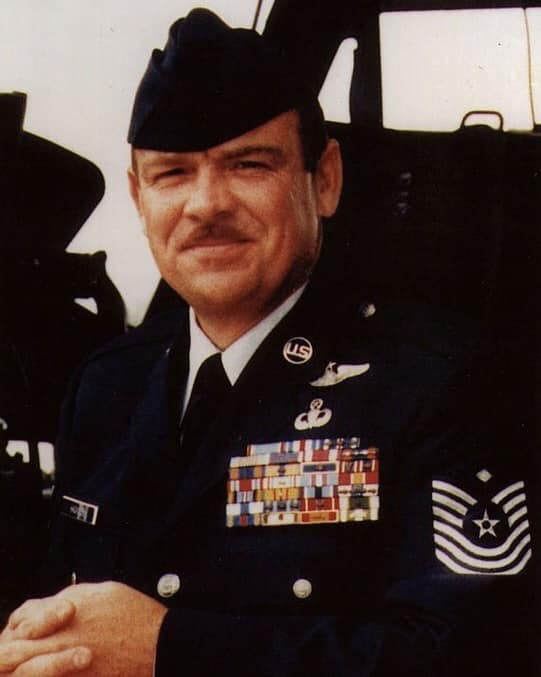
Chief Master Sergeant Hackney retired from the United States Air Force 30 June 1991. His military awards include the Air Force Cross; the Silver Star; the Distinguished Flying Cross with three oak leaf clusters (four awards); the Airman’s Medal; and the Air Medal with 18 oak leaf clusters (19 awards). He was also awarded the Cheney Award.
In 1993, Hackney, then living in Trout Run, Pennsylvania, was studying anesthesiology at Lycoming College in Williamsport.
Chief Master Sergeant Duane Dale Hackney, United States Air Force (Retired) died in Williamsport Hospital, Williamsport, Pennsylvania, 3 September 1993. His remains were interred at the Sunset Hill Cemetery in Flint, Michigan.

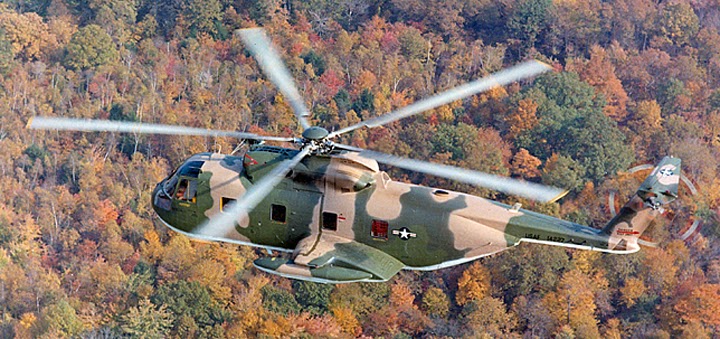
After Hackney fell from the helicopter, it was shot down by ground fire. All four remaining on board were killed.²
The Sikorsky HH-3E (Sikorsky S-61R) earned the nickname Jolly Green Giant ³ during the Vietnam War. It is a dedicated Combat Search and Rescue (CSAR) helicopter flown by the U.S. Air Force, based on the CH-3C transport helicopter. The aircraft is flown by two pilots and the crew includes a flight mechanic and gunner. It is a large twin-engine helicopter with a single main rotor/tail rotor configuration. It has retractable tricycle landing gear and a rear cargo ramp. The rear landing gear retracts into a stub wing on the aft fuselage. The helicopter has an extendable inflight refueling boom.
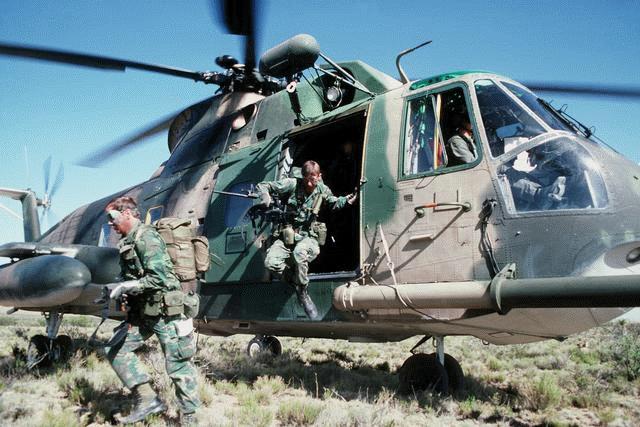
The HH-3E is 72 feet, 7 inches (22.123 meters) long and 18 feet, 10 inches (5.740 meters) high with all rotors turning. The main rotor has five blades and a diameter of 62 feet (18.898 meters). Each blade has a chord of 1 foot, 6.25 inches (0.464 meters). The main rotor turns at 203 r.p.m., counter-clockwise, as seen from above. (The advancing blade is on the right.) The tail rotor also has five blades and has a diameter of 10 feet, 4 inches (3.150 meters). The blades have a chord of 7–11/32 inches (0.187 meters). The tail rotor turns clockwise as seen from the helicopter’s left. (The advancing blade is below the axis of rotation.) The tail rotor turns 1,244 r.p.m.
The HH-3E has an empty weight of 13,341 pounds (6,051 kilograms). The maximum gross weight is 22,050 pounds (10,002 kilograms).
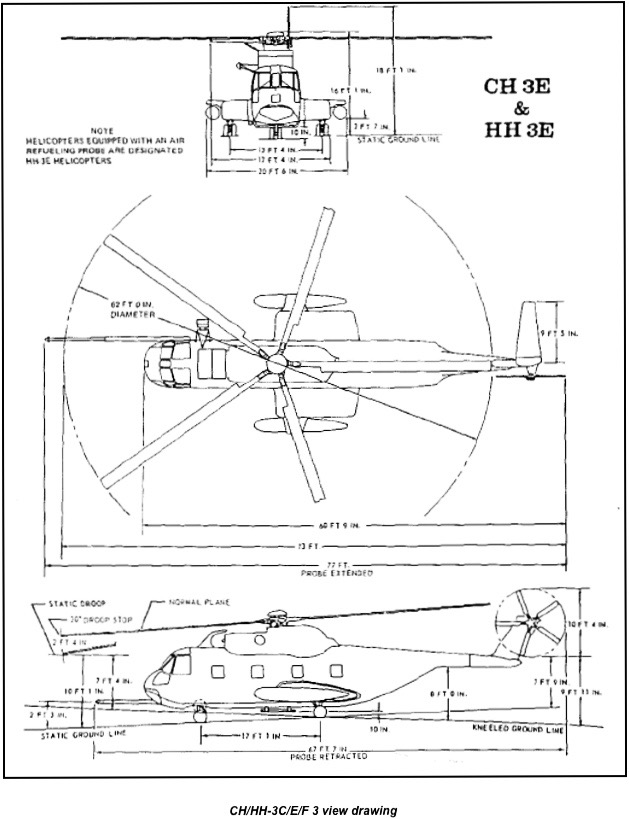

The HH-3E has a cruise speed of 154 miles per hour (248 kilometers per hour) at Sea Level, and a maximum speed of 177 miles per hour (285 kilometers per hour), also at Sea Level. The service ceiling is 14,000 feet (4,267 meters). The HH-3E had a maximum range of 779 miles (1,254 kilometers) with external fuel tanks.
The Jolly Green Giant can be armed with two M60 7.62 mm machine guns.
Sikorsky built 14 HH-3Es. Many CH-3Cs and CH-3Es were upgraded to the HH-3E configuration. Sikorsky built a total of 173 of the S-61R series.
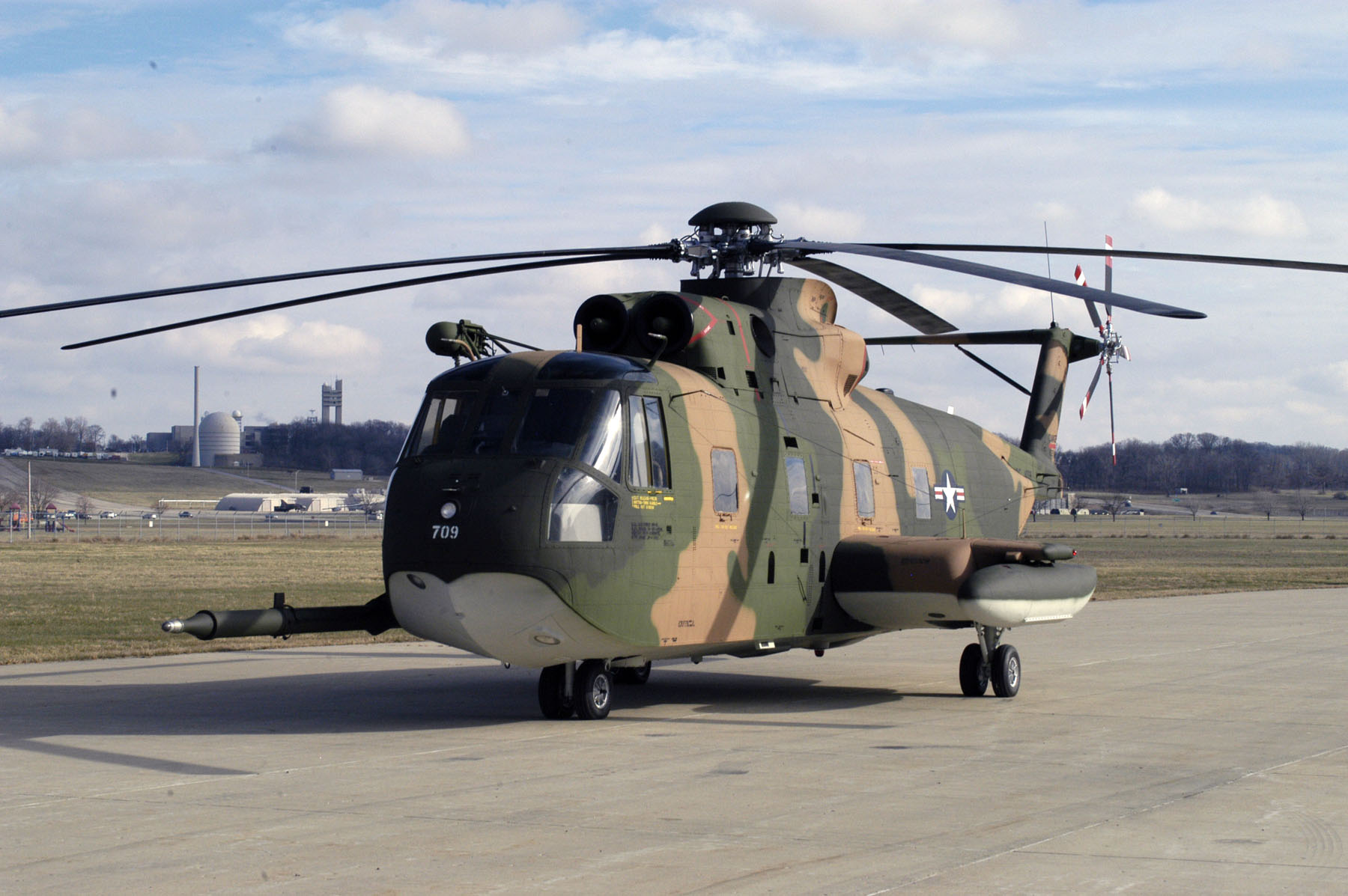
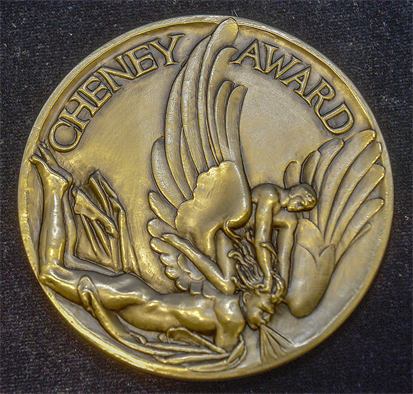
¹ The Cheney Award is a bronze medal awarded annually to honor acts of valor, extreme fortitude or self-sacrifice in a humanitarian interest performed in connection with aircraft (not necessarily military). It memorializes U.S. Army Air Service Lieutenant Bill Cheney, who was killed in action on 20 January 1918. The award was initiated by his family. It has been called the “Peacetime Medal of Honor.”
² The rescued pilot was a Forward Air Controller (FAC), Captain Lucius Lamar Heiskell, USAF, 23rd Tactical Air Support Squadron, 504th Tactical Air Support Group. He flew with the call sign “Nail 65.” Heiskell’s aircraft was a Cessna O-1F Bird Dog, serial number 57-2807. The HH-3E, “Jolly Green 05,” was flown by Major Patrick Hardy Wood and Captain Richard Abbott Kibbey. The flight engineer was Staff Sergeant Donald Joe Hall.
 ³ Beginning in 1928, an American food company began using a cartoon figure to advertise its “Green Giant” brand of canned peas. Eventually the mascot represented The Green Giant Company’s other canned and frozen vegetables. The character is now owned by General Mills. The nickname of the Sikorsky HH-3E Jolly Green Giant is derived from this advertising character.
³ Beginning in 1928, an American food company began using a cartoon figure to advertise its “Green Giant” brand of canned peas. Eventually the mascot represented The Green Giant Company’s other canned and frozen vegetables. The character is now owned by General Mills. The nickname of the Sikorsky HH-3E Jolly Green Giant is derived from this advertising character.
© 2025, Bryan R. Swopes

